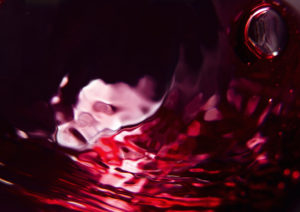UN’UVA CHE SI PRESTA AD APPASSIMENTO, LA CONSUETUDINE DI PRODURRE UN VINO INVECCHIATO, DAL COLORE INTENSO
A GRAPE THAT LENDS ITSELF WELL TO PARTIAL DRYING, THE USUAL WAY OF PRODUCING AND AGED WINE, WITH AN INTENSE COLOUR.


La storia del Raboso, parte da molto lontano. Citato da Plinio il Vecchio, nella sua Naturalis Historia, veniva descritto come “Picina omnium nigerrima”, ossia più nero della pece. I vitigni e il vino che se ne ricavava nel Nord Est d’Italia prima dell’avvento di Roma, furono adottati dalla Serenissima Repubblica di Venezia che ne fece un vino da viaggio, grazie alle sue caratteristiche di varietà robusta, altamente acida, ricca di tannini, nonché resistente alla muffa e al deterioramento. Tale era la sua resistenza nel tempo che, in passato, quando nasceva un bambino, si era diffusa l’usanza di conservare il Raboso per il giorno delle sue nozze.
La presenza del Raboso nell’area Veneto-Friulana è documentata fin dal ‘600; ne parlano il trevigiano Jacopo Agostinelli, nel 1679 e in tempi più recenti, Antonio Carpené, nel 1881, quando dichiara che la Rabosa nera era forse la più importante varietà del Veneto orientale. Nel 1973, Giovanni Dalmaso, afferma che, in Sinistra Piave, 58.000 su 65.000 ettolitri di vino rosso erano di Raboso Piave. Il Raboso però, dopo secoli di successi, tra il 1950 e il 1960, incontra le prime difficoltà. Gli agricoltori privilegiarono varietà più richieste dal mercato e il Raboso lasciò spazio al Merlot e al Cabernet. Si dovrà attendere gli anni ’90 per vedere riqualificata la terra del Raboso e grazie a nuove tecniche di coltivazione, di vinificazione e di invecchiamento possiamo dire ripartito il rilancio di questa uva antica.
La presenza del Raboso nell’area Veneto-Friulana è documentata fin dal ‘600; ne parlano il trevigiano Jacopo Agostinelli, nel 1679 e in tempi più recenti, Antonio Carpené, nel 1881, quando dichiara che la Rabosa nera era forse la più importante varietà del Veneto orientale. Nel 1973, Giovanni Dalmaso, afferma che, in Sinistra Piave, 58.000 su 65.000 ettolitri di vino rosso erano di Raboso Piave. Il Raboso però, dopo secoli di successi, tra il 1950 e il 1960, incontra le prime difficoltà. Gli agricoltori privilegiarono varietà più richieste dal mercato e il Raboso lasciò spazio al Merlot e al Cabernet. Si dovrà attendere gli anni ’90 per vedere riqualificata la terra del Raboso e grazie a nuove tecniche di coltivazione, di vinificazione e di invecchiamento possiamo dire ripartito il rilancio di questa uva antica.
The history of the Raboso begins long ago. Mentioned by Pliny the Elder in his Naturalis Historia, it was described as “Picina omnium nigerrima”, in other words, blacker than tar. The varieties and the wine that was found in the North East of Italy before the advent of Rome, were adopted by the Most Serene Republic of Venice which made it into a travelling wine, thanks to its characteristics as a vigorous variety, highly acid, rich in tannins and resistant to mildew and deterioration. It withstood the test of time so well that in the past, when an infant was born, there was a widespread custom of keeping the Raboso for the child’s wedding day.
The presence of the Raboso in the Veneto-Friuli area is documented as far back as the late 1600s; they were mentioned by Treviso native Jacopo Agostinelli in 1679 and more recently by, Antonio Carpené in 1881 when he stated that the black Rabosa was perhaps the most important variety of eastern Veneto. In 1973, Giovanni Dalmaso stated that on the left bank of the Piave, 58,000 of the 65.000 hectolitres of red wine were made from the Piave Raboso. However, after centuries of success, the Raboso encountered its first difficulties between 1950 and 1960. Farmers began to privilege varieties that were more popular on the market and the Raboso made space for the Merlot and Cabernet. We would have to wait until the 1990s to see the land of the Raboso reclaimed and, thanks to new farming, fermentation and ageing techniques, we can now say that this ancient grape was relaunched.
The presence of the Raboso in the Veneto-Friuli area is documented as far back as the late 1600s; they were mentioned by Treviso native Jacopo Agostinelli in 1679 and more recently by, Antonio Carpené in 1881 when he stated that the black Rabosa was perhaps the most important variety of eastern Veneto. In 1973, Giovanni Dalmaso stated that on the left bank of the Piave, 58,000 of the 65.000 hectolitres of red wine were made from the Piave Raboso. However, after centuries of success, the Raboso encountered its first difficulties between 1950 and 1960. Farmers began to privilege varieties that were more popular on the market and the Raboso made space for the Merlot and Cabernet. We would have to wait until the 1990s to see the land of the Raboso reclaimed and, thanks to new farming, fermentation and ageing techniques, we can now say that this ancient grape was relaunched.